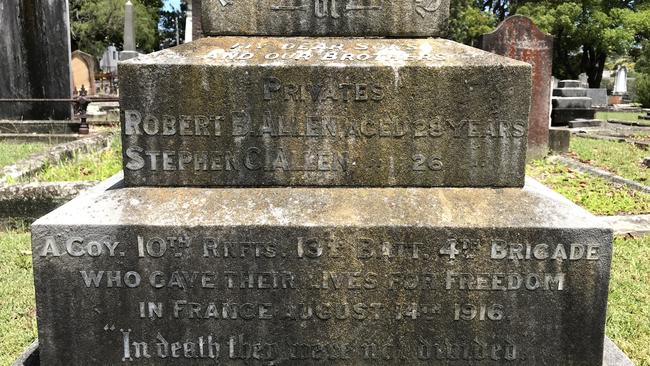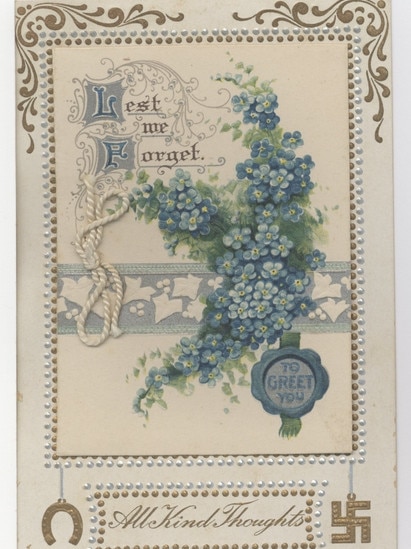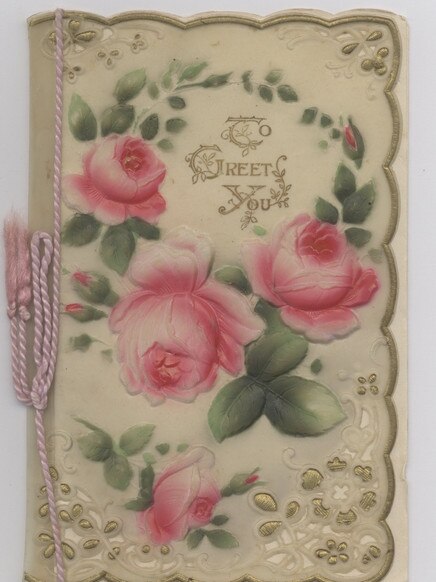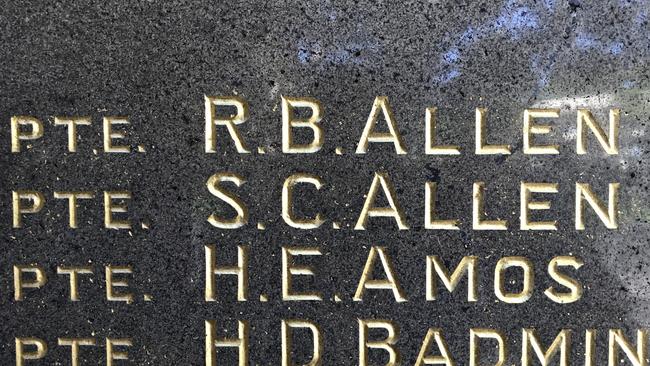Manly’s Allen family encapsulates the devestating toll of the so-called War to End all Wars
Two brothers from Manly enlisted in July 1915, had consecutive service numbers, served in the same unit, fought side-by-side on the Western Front and were killed at the same instant by a single cannon shell.
Manly
Don't miss out on the headlines from Manly. Followed categories will be added to My News.
- Cecil Healy, champion swimmer, social observer who died in war
- Remembering the 61,000 Australians killed during World I
- The hidden torment of hero and swimming coach Tommy Adrian
Two brothers from Manly enlisted in July 1915, had consecutive service numbers, served in the same unit, fought side-by-side on the Western Front and were killed at the same instant by a single cannon shell.
And not only were brothers Robert and Stephen Allen as close in life as they were in death, they were also very close to their mother and sisters.
The four children’s father died in 1897 when he was 44 and when the children were still young, which might explain the closeness of the remaining family members.


After the boys’ mother and sisters finally learned how Robert and Stephen had died, they added the following to the large headstone over their father’s grave in Manly Cemetery.
“In loving memory of my dear sons and our brothers, Privates Robert B. Allen, aged 28 years, Stephen C. Allen aged 26 years.
“A Company, 10th Reinforcements, 13th Battalion, 4th Brigade, who gave their lives for freedom in France August 14th 1916.
“In death they were not divided.”

And just as the brothers were not divided in death, nor were their mother Hester and sisters divided in their grief, especially the sisters Minnie and Florrie, who the brothers obviously adored, judging by the cards, letters, poems and flower petals they sent to the family home in Pittwater Rd, Manly.


Adding to their mother’s and sisters’ grief was that it was seven months before they received news that Robert and Stephen were certainly dead, nearly a year before they learned how they had died and another year before they learned that the boys had no known grave.
Prior to that, they only knew the boys were missing and were presumed dead but two months elapsed between the army determining the brothers were dead and that information being passed on to their mother and sisters.

After enlisting in July 1915, Robert and Stephen Allen were sent to Egypt, where they trained for several months and from where they sent their sisters embroidered cotton sateen cushion covers.
Then the brothers were sent to France and were soon in the thick of the fighting.
In July and August 1916, the 13th Battalion fought major actions at Mouquet Farm near Pozieres.
On August 14, the Allen brothers and four other men were returning from the front line when a shell landed on the parapet of the trench along which they were walking.
Speaking from a hospital bed in May 1917 – nine months after the incident – one of the men who had also been in the trench, Private Will Hales, told the military authorities: “I and about five others were going from the front line near Mouquet Farm back to Sausage Gully for rations.
“This was towards evening but it was quite light.
“Whilst going up Tom’s Cut near the front line, a shell came over and exploded on the parapet, killed the two Allen brothers, who were immediately in front of me in the communication trench, and wounded my brother, who was just in front of the Allens.
“It killed both the Allens outright and a man named White.”

In a letter to the Allen brothers’ mother the following month, Pte Hale wrote: “When the shell came over, I knew by the screams that someone had got it.
“I could not get through for some time, as I was half silly from the shock.
“However when I could get through, my brother was seriously wounded and your two brothers were laying there, they had been killed.”
A captain in the 13th Battalion wrote to the boys’ mother that her sons would have been buried “along with a large number of their Australian comrades on the field of battle”.

But like tens of thousands of other soldiers who were buried on the battlefields of the Western Front, the whereabouts of their graves remain unknown, so the Allen brothers names are on the Villiers-Bretonneux memorial and also on the Manly War Memorial.
The boys’ mother Hester died in 1925, aged 71, by which time she and her daughters had moved to a house Beach St, Curl Curl, on land that Stephen had bought in 1914.
The Allen sisters, united in their grief, never married and lived together at Beach St until their deaths.

Florrie died in 1965, aged 81, and Minnie died in 1978, aged 92.
The sisters are buried in the same grave in Frenchs Forest Cemetery, just as their brothers are buried in the same grave near Mouquet Farm in France and their parents are buried in the same grave in Manly Cemetery.
